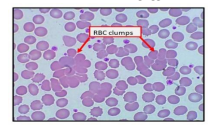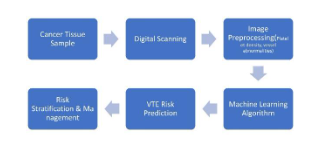Cytomorphological Spectrum of Head and Neck Lesions and Its Clinico-Histopathological Correlation: Insights from a Retrospective Study at a Tertiary Care Centre in Gujarat, India
Dr. Garima Anandani

Keywords: Fine needle aspiration cytology, Histopathology, Head and Neck, Correlation
Introduction: Fine Needle Aspiration Cytology (FNAC) is a rapid, straightforward, secure, and cost-effective method that is widely recognized for its effectiveness in diagnosing a range of swellings [1,2]. FNAC is extensively utilized in the head and neck areas, including lymph nodes, thyroid, salivary glands, and other lesions [3,4].
Aims and objectives: To study the spectrum, determine the frequencies and correlate cytological findings with clinical features and histopathological diagnosis, of various types of head and neck lesions, to identify the diagnostic accuracy of FNAC, at a tertiary care centre in Gujarat
Material and methods: This retrospective record-based study encompassed data from 236 patients who sought consultation at our hospital, between January 2022 and April 2025, presenting with head and neck lesions and subsequently referred for FNAC. The cytomorphological characteristics of these lesions were assessed to determine the prevalence of various types and to categorize them accordingly. Following this, a correlation was established between the cytomorphological findings and the clinical features, as well as the histopathological diagnoses in instances where a biopsy was performed.
Results: Surgical biopsy was performed in 180 cases (76.3%). The histopathological results aligned with the FNAC findings in 155 cases (86.1%), while discrepancies were noted in 25 cases (13.9%). The most frequently affected sites included lymph nodes (41.1%), followed by the thyroid (33.9%), salivary glands (15.3%), cystic lesions (5.9%), and miscellaneous lesions (3.8%). Reactive lymphadenitis as the leading non-neoplastic lesion, pleomorphic adenoma as the most common benign tumor, and metastatic squamous cell carcinoma as the most frequently observed malignant lesion in the head and neck region.
Conclusion: FNAC is a straightforward, quick, and secure diagnostic method, with the present study demonstrating a sensitivity of 86.1%, a specificity of 100%, and a diagnostic accuracy of 86.2% in distinguishing neoplastic from non-neoplastic lesions in the palpable head and neck region.
Digital Formats: Figure 1: FNAC smears and histopathology Haematoxylin and eosin stained slides showing microscopic features of Warthin’s tumor.


Heading Styles: The section heads in this template use the correct style (upper and lower case, bold, followed by a colon).
References:
- Nallagutta N, Reddy SE, Gour S, Ayesha S, G J, Kotikalapudi R. Fine Needle Aspiration Cytology of Head and Neck Masses. Sch J App Med Sci. 2016;4(11B):3990–2.
- Jadhav D. S, Barge A. K, Valand A. G, Study of fine needle aspiration cytology of palpable head and neck lesions in tertiary care centre. Indian J Pathol Oncol 2018;5(3):375-381
- Hota A, Mohanty P, Mohanty M. A Study on cytomorphological and histopathological correlation of head and neck lesions in a tertiary care centre, Bhubaneswar, Odisha. J Evid Based Med Healthc 2021;8(33):3104-3109. DOI: 10.18410/jebmh/2021/565
- Sreelekshmi J.R., Joseph T. Structured reporting of lymph node cytopathology using the 2020 sydney system guidelines—A retrospective study. Natl. J. Lab. Med. 2023;12:39–44. doi: 10.7860/NJLM/2023/61109.2722.
Biography: Dr. Garima Anandani has completed Post Doctoral Fellowship in Haematopathology from JIPMER, Puducherry; Senior residency in Surgical Pathology from AIIMS, New Delhi; MBBS and MD Pathology from Gujarat university; and DNB Pathology from National Board of Examination, New Delhi, India. She is presently working as an Assistant Professor in Department of Pathology, All India Institute of Medical Sciences (AIIMS) Rajkot. She has published more than 20 abstracts in different journals.#UCJournals #HeadAndNeckLesions #Cytomorphology #Histopathology #PathologyResearch #ClinicalCorrelation #FNAC #CytologyStudy #HeadNeckPathology #TumorDiagnosis #OralPathology #ENTResearch #MedicalResearch #HistopathologicalStudy #CytologyResearch #Cytopathology #ClinicalPathology #DiagnosticPathology #CancerResearch #OncologyResearch #MedicalEducation #PathologyUpdates #HeadNeckTumors #TumorBiopsy #CytologicalDiagnosis #HistologicalCorrelation #MedicalCaseStudy #PathologyCase #CytologyOfTumors #HistopathologyOfTumors #PathologyFindings #ClinicalStudy #MedicalScience #TumorCytology #FNACStudy #OncologyPathology #DiagnosticMedicine #ClinicalResearch #MedicalPathology #CytopathologyStudy #TumorResearch #ENTPathology #OralLesions #MedicalCaseReports #HistopathologicalCorrelation #PathologyCommunity #ClinicalOncology #TumorSpectrum #CytologyOfLesions #PathologyEducation #MedicalDiagnosis #HeadNeckCancer #CancerDiagnosis
Upcoming Conferences;
- 16th Emirates Pathology, Digital Pathology & Cancer Conference
More Details: https://pathology.utilitarianconferences.com/
- Submit your abstract/research papers/case- study here: https://pathology.utilitarianconferences.com/submit-abstract
- Attend as a Speaker/Poster/Delegate In-person kindly register here: https://pathology.utilitarianconferences.com/registration
- Attend as a Speaker/Poster/Delegate virtually kindly register here: https://pathology.utilitarianconferences.com/virtual-registration



